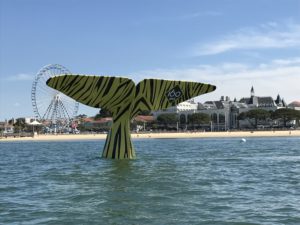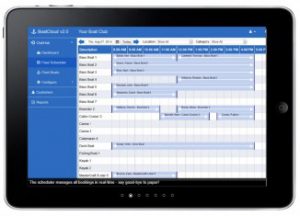Strapped in or strapless?
Read about an interesting experience of Howard Aiken who explains the benefits of a strapless foot stretcher while beein on your erg.
According Aikens view which he expressed here, the foot-straps on every ergo meter are there for the athlete’s safety and any coach who feels that he or she would be compromising their athlete’s safety by doing without them on low-rate endurance ergs should feel free to ignore this blog.
Feet out: rowing strapped in or strapless on your Erg. Train your Hip Flexor Muscle
For those still reading, here’s an interesting observation. He routinely teach beginners to do any erg sessions at 20 spm or lower, without straps. A recent group of student beginners arrived at the club already trained on the erg and he introduced them to strapless technique. After a short erg some of them reported feeling that they were doing much more work with their hip flexor muscles – exactly the muscles which would be working more consistently to maintain their upper body posture when using the erg without straps. That is a good thing. It meant that they were now using muscle to compensate for the support they had been getting from the straps, particularly at backstops.
Aiken thinks this is important, because if a rower is dependent on the straps to maintain balance while on the erg, they’ll be dependent on their shoes to maintain balance while rowing – and that will tend to disrupt the balance of the boat.
Analytics:
The forces exerted on the straps or shoes at the end of the drive phase (the finish) are
- (1) in the direction of movement, to absorb the inertia of the rowers body weight moving to backstops and
- (2) upward, to stop the rower falling backward as they lean back. It is the upward component which is disruptive, because people are not symmetrical and so it is almost impossible for the force to be exerted equally on the two shoes.
- One will be pushed upward more strongly than the other and the boat will respond by rolling downward on the opposite side.
Rowers are only made aware that this is effect if and when they are asked to row “feet out” (i.e. feet outside the shoes) and even though this awareness helps, without the development of the hip flexor muscles on the erg (by doing low rate endurance sessions without the straps), they won’t have the muscle tone to correct it.
So with the caveat on safety at the top of this blog, Aiken encourages coaches to develop strapless / feet out technique on the erg as a real aid to boat stability. Give it a try.
Photocredit: Concept 2, RP3, Athletico.com










This Post Has 6 Comments
Interesting article, although the photo chosen is featuring the sartorius muscle which while it is considered a hip flexor contributes way less to hip flexion than the psoas, the illiacus and the quadratus femoris.
Sorry. Quadratus femoris lies posterior to the hip joint and is an adductor, external rotator and if anything extensor.
The article/note doesn’t deal with the forces exerted in the direction of movement, (1) above. If nothing is done to compensate for these then surely the rower will continue backwards and lose all contact with the foot stretcher? You might realise that I am new to this. I found that it is necessary to have a strong finish, accelerating all the way through to combat this force which I thought is a good thing and the prime lesson of rowing “feet out”.
Hi Andy. The key here is that all of the forces exerted in the direction of movement should be transferred to the blade/handle by the time the rower finishes the drive phase of the stroke. A good technique (legs drive first, then body and lastly arms) is helpful here, because with good technique your body has almost stopped moving by the time you are finishing the stroke with the arms. Beginners tend to use legs, bodies and arms all at the same time, so their body weight is still moving toward the bows as they finish the stroke – which causes the problem you mention. Hope this helps.
Interesting article and validation of my own experience. I have been erging with feet out exclusively for the past 3-4 years. I don’t get out on the water as much as I would like due to life and work, so my erg work is as much focused on technique as fitness. I routinely erg at the lower stroke rate, but have rowed sprint pieces as well at 26-30 spm with only a slightly higher split. To me feet out is more in line with being in the boat. It requires awareness of your alignment and body position and you cannot simply throw yourself back with abandon which is also something you would not do in a boat.
Thanks,
PK
Paul, thank your for this valuable comment to our post. As always we appreciate critical interaction with our posts.
Tom